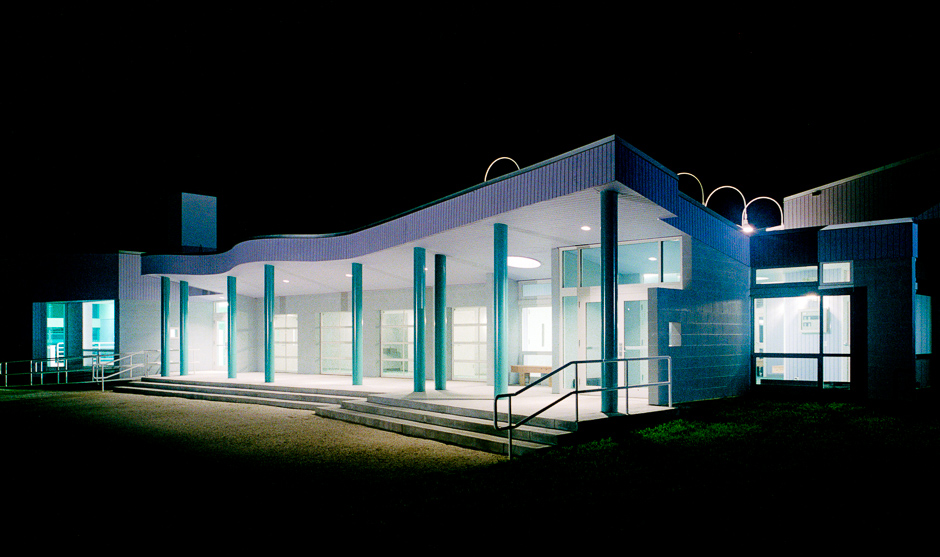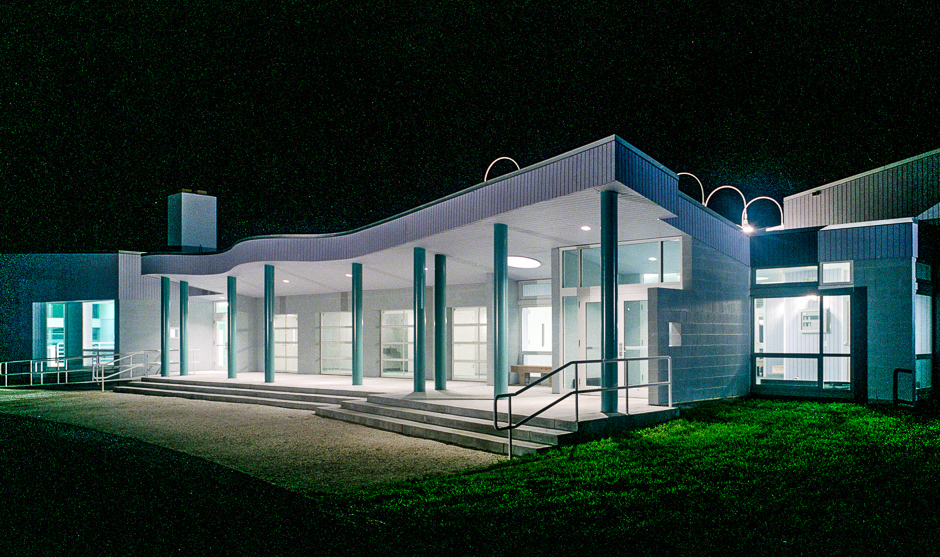Portfolio sponsored by Bruce Nagel + Partners | Architects
~~~~~~~~~~~~~~~~~~~~~~~
CAMP BLUE BAY, 1993
Girl Scouts of Nassau County
East Hampton, New York
Nagel & Lesser Architects
Our project for Camp Blue Bay in East Hampton for the Girl Scouts of Nassau
County, completed in the Fall of 1993, was actually five projects in one: a new 8500 SF
Activity Building, two new 2700 SF Troop Houses (four were planned), renovation of the
5000 SF Anchorage Dining Hall, a new prototype Wash House for the Tent Units, and a
site work program including new and improved roads, parking, entrances and gates, and
utilities infrastructure.
———- ACTIVITY BUILDING ———-
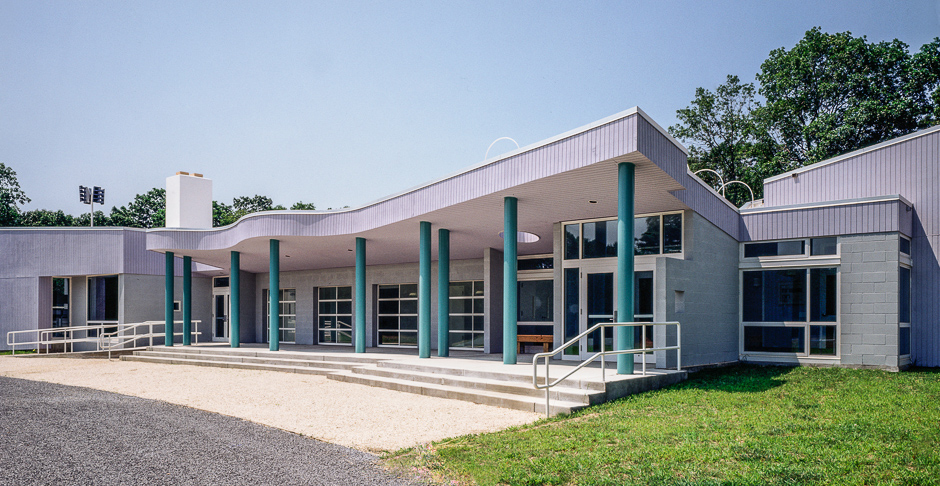
The Activity Building includes a large hall, the Great Room, in one wing that is a multi-use
activity space for indoor sports and assemblies of the entire Camp population. This hall is
supported by a kitchen, which like the three Group Rooms in the other wing, has a
classroom-type educational function. The building’s core area includes a coat room for 200
and toilets, and opens up in warm weather with overhead doors to give an airy summer
feeling to this otherwise year-round, heated camping structure.


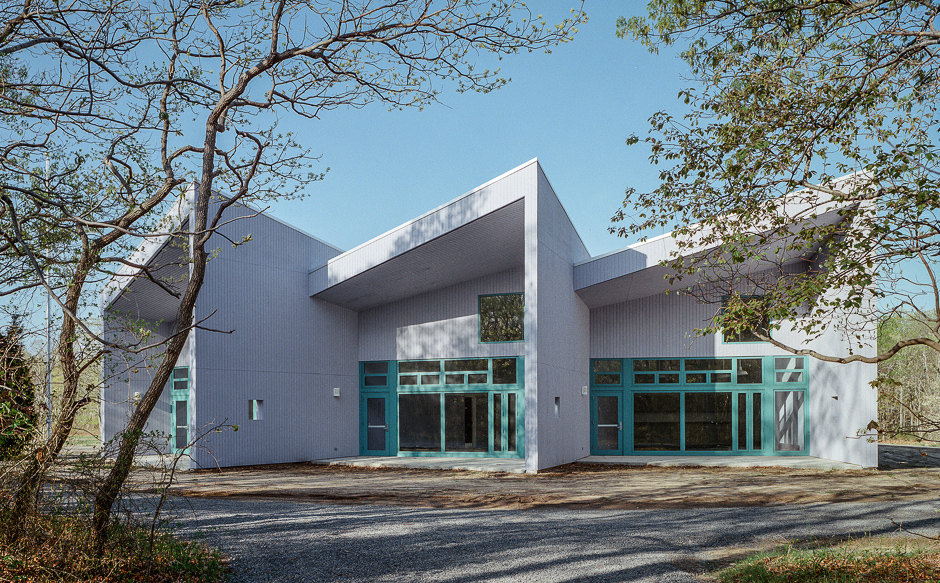


With its angled and folded roofs and translucent skylit entry, the Activity Building makes a
claim on its site as an encampment of tents, a collective gathering of outdoor-related
activities at the crest of the open Sports Field. An outdoor stage frames the west end of
the Great Room. The entry steps to the canopied main terrace form seating for outside
gatherings at the head of the Sports Field. And the Group Rooms turn their shaded outdoor
work spaces to the east. Drawing from other seminal Modernist works, this building tries to
include in its inflected form and the geometry of its plan, the pressures of its site, and,
thereby, physically and spiritually anchor itself on the site as both the functional and
symbolic locus of a new Camp Center.
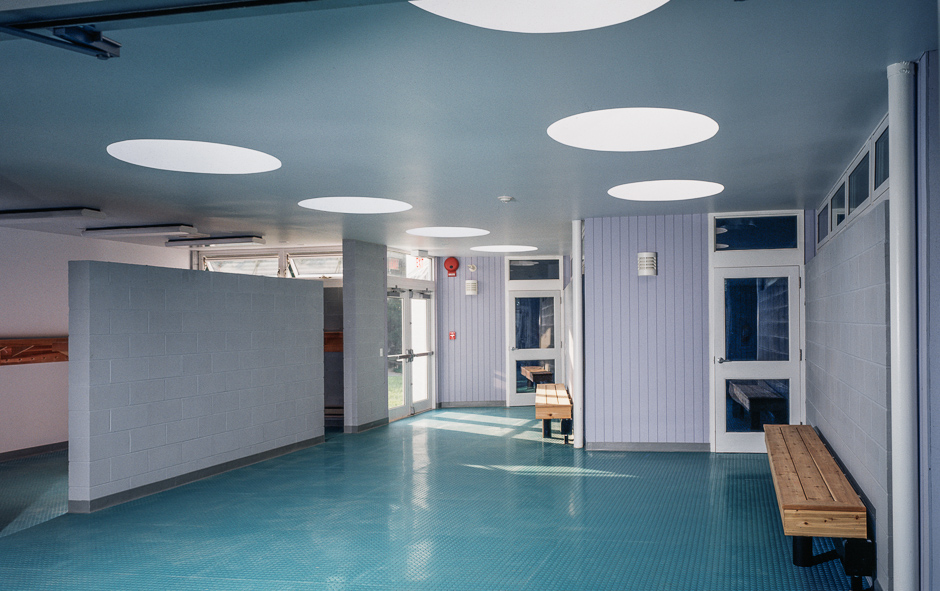
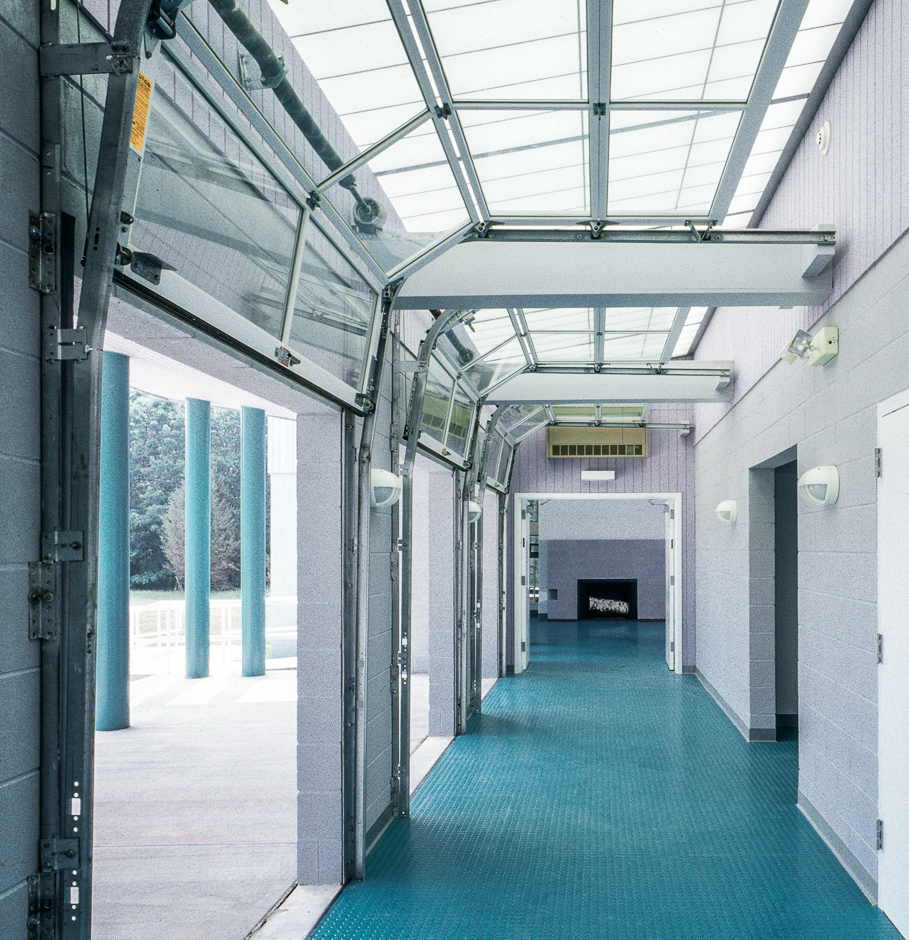
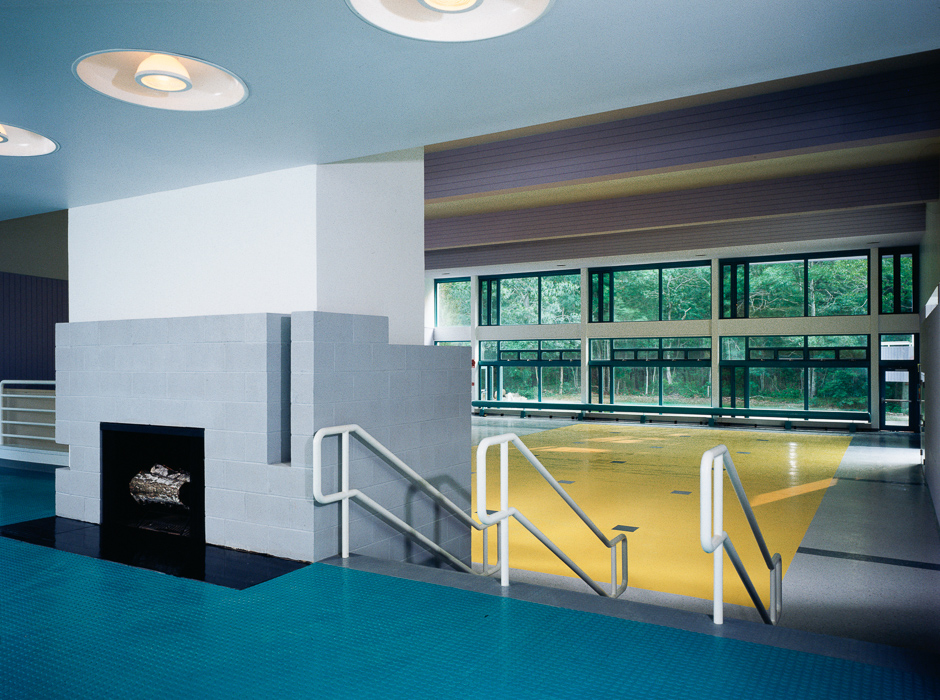

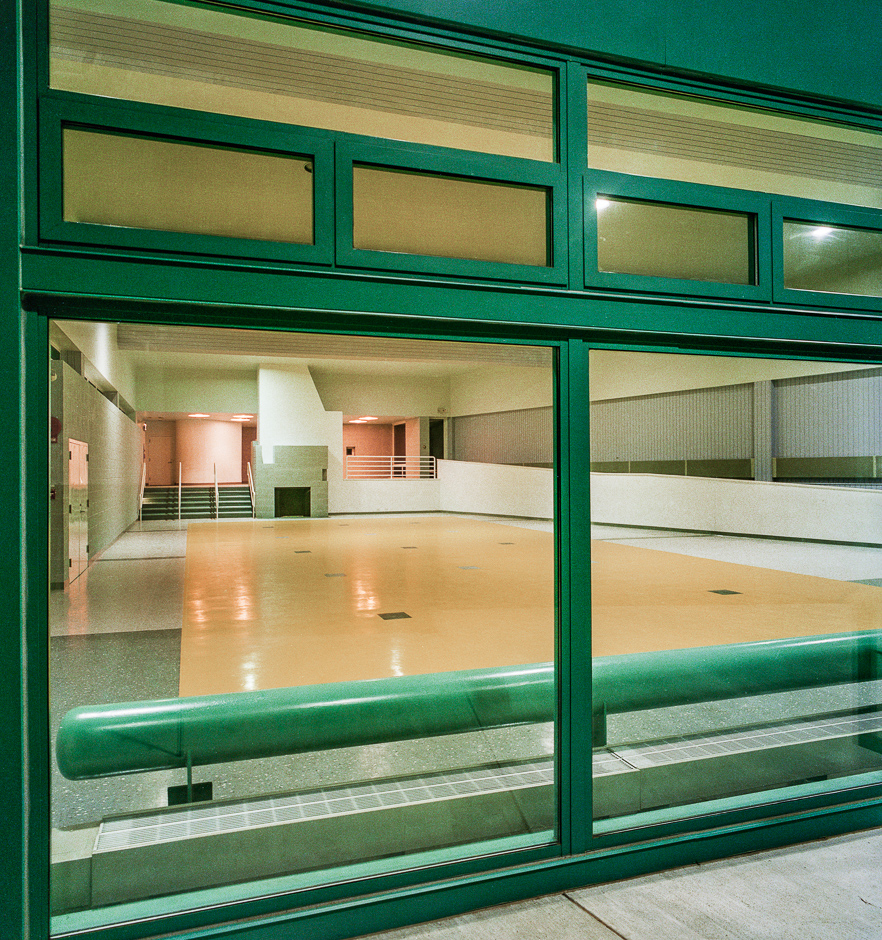
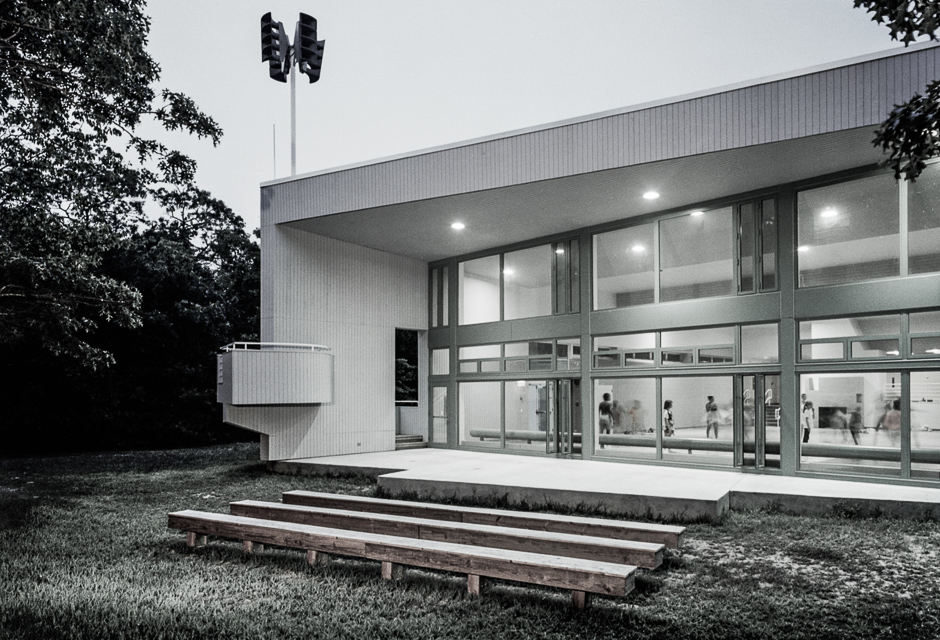
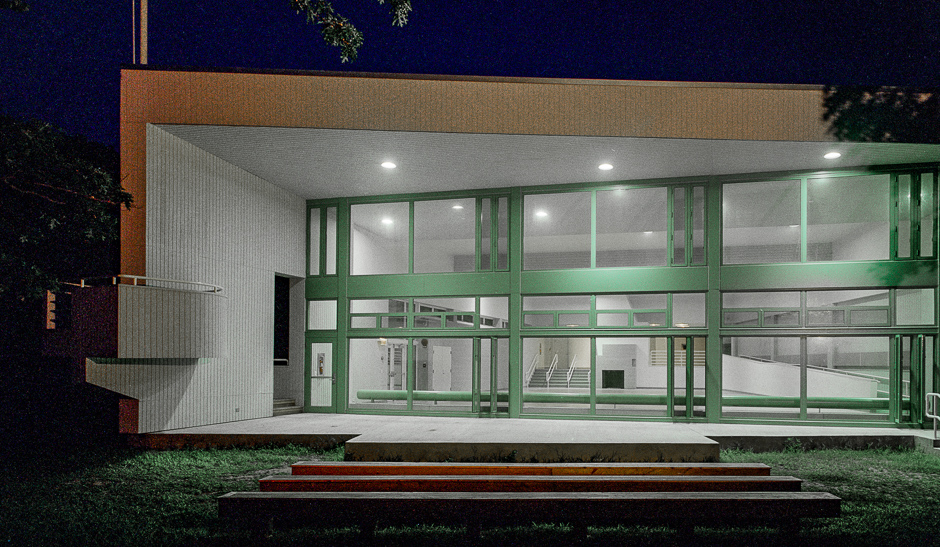
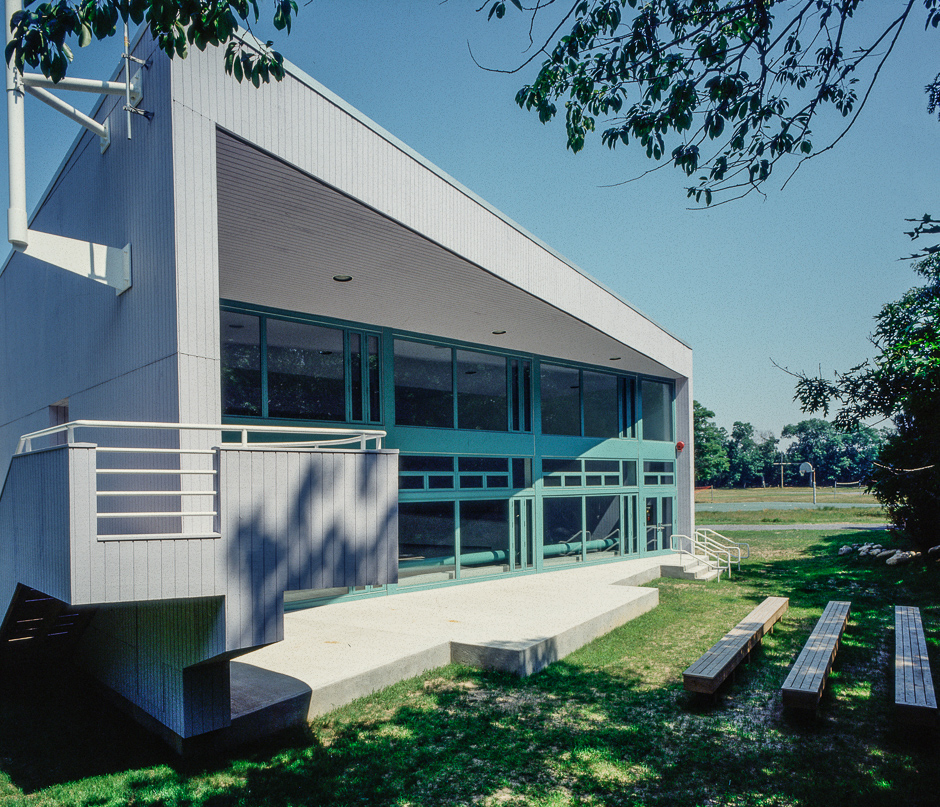
———- Troop Houses ———-

As the Activity Building is therefore a first step in initiating a new core area for the Camp,
the Troop Houses are the first step towards making a more useable, year-round winterized
facility. Housing a maximum of twenty-four Girl Scouts and six adult leaders each, the
Troop Houses are thematically modeled on the outdoor Tent Units, since they are to provide
the same functions and a similar experience, yet within camping space heated for all
seasons.


Each Troop House bunk area has translucent panel walls and a shaped roof to make it tent like.
With the Bunk Rooms abutting a Common Room and outside deck that together make
the focal space for the Kitchen and Bath facilities, each Troop House is organized in much
the same way a Tent Unit gathers a cooking shelter and a wash house around a common
cleared space at the center of a tent cluster. As each component of the Troop House is
given architectural expression as its own little building – shed, tent or lean-to shelter – the
theme of encampments in Camp Blue Bay’s new structures, albeit expressed in
contemporary pavilions, is continued into the Troop Houses
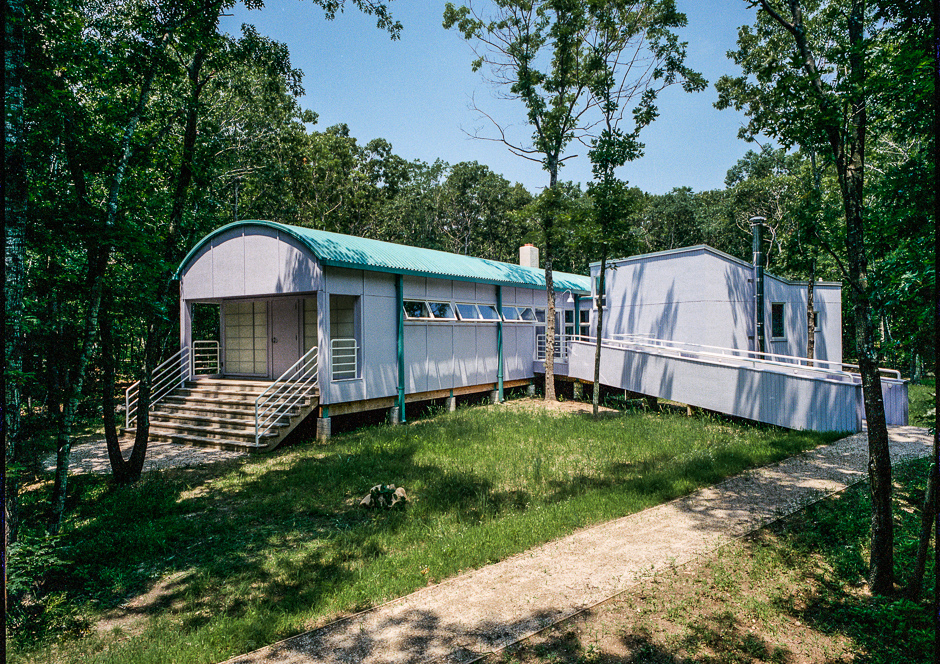
———- Wash House ———-
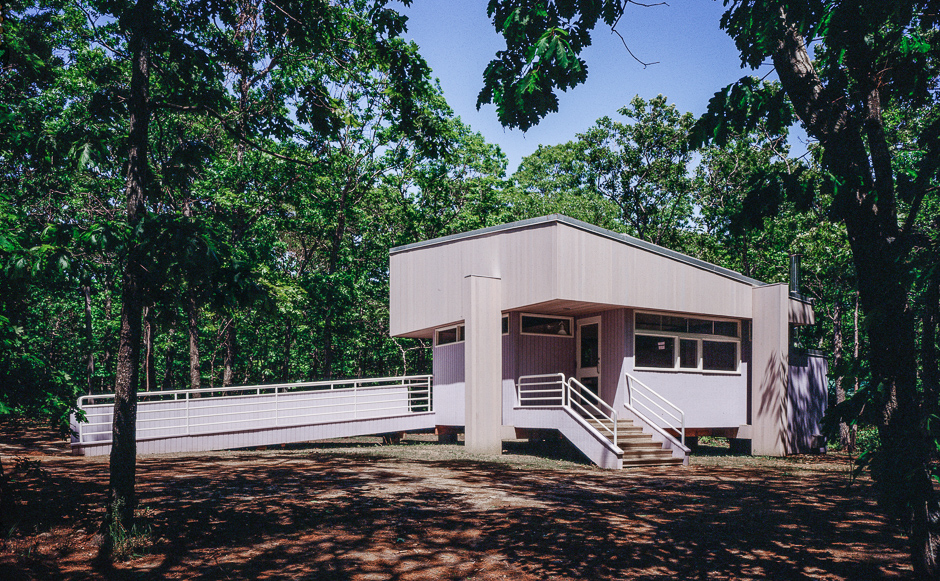
One new Wash House, a prototype for future replacements of the existing Tent Unit
facilities which provides new, more maintainable service systems, also inserts the new
architectural themes into the Tent Units. A shed-roofed spiral diagram, it is another self-sufficient
architectural type that itself draws on other seminal Modernist pavilions. Skylit
with a translucent panel roof – open and of natural wood materials similar to the tent
platforms – it is therefore intended to be both new and part of the existing fabric of the Tent
Unit encampment.

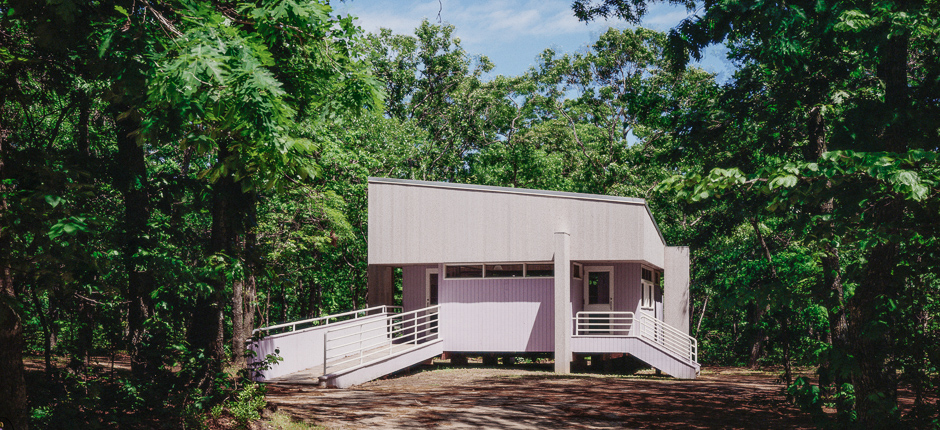
———- Anchorage Dining Hall ———-
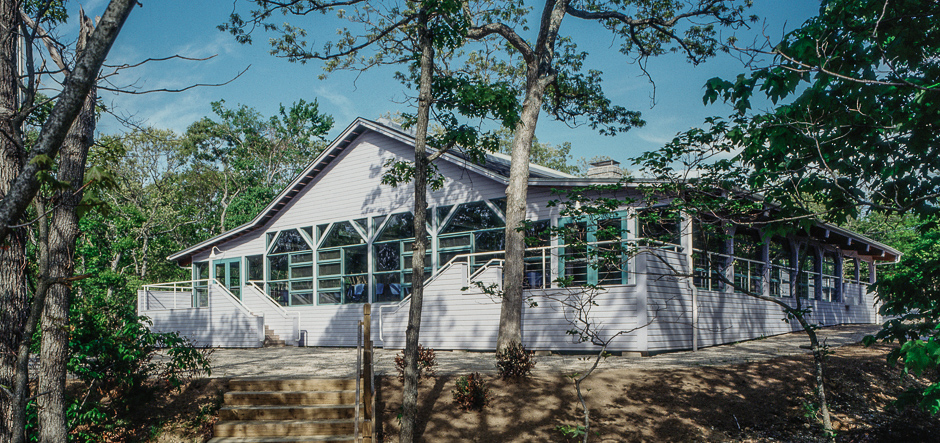
The existing Anchorage Dining Hall is enclosed with new glazing, roofed entries;, stair and
ramp access and screened kitchen court to revive its role as a central Camp building and
extend its utility through three seasons. By organizing the decks and surrounding terrace of
the Anchorage to give it the feeling of an Ark-like superstructure, the nautical metaphor for
the Anchorage inherent in its name and its inherited place as the central refuge in the camp
(from the elements) is underscored. And by skylighting it as well with the translucent panel
material, the old central hall is given its own permanent reference to the light canvas
structures that are encamped around it.
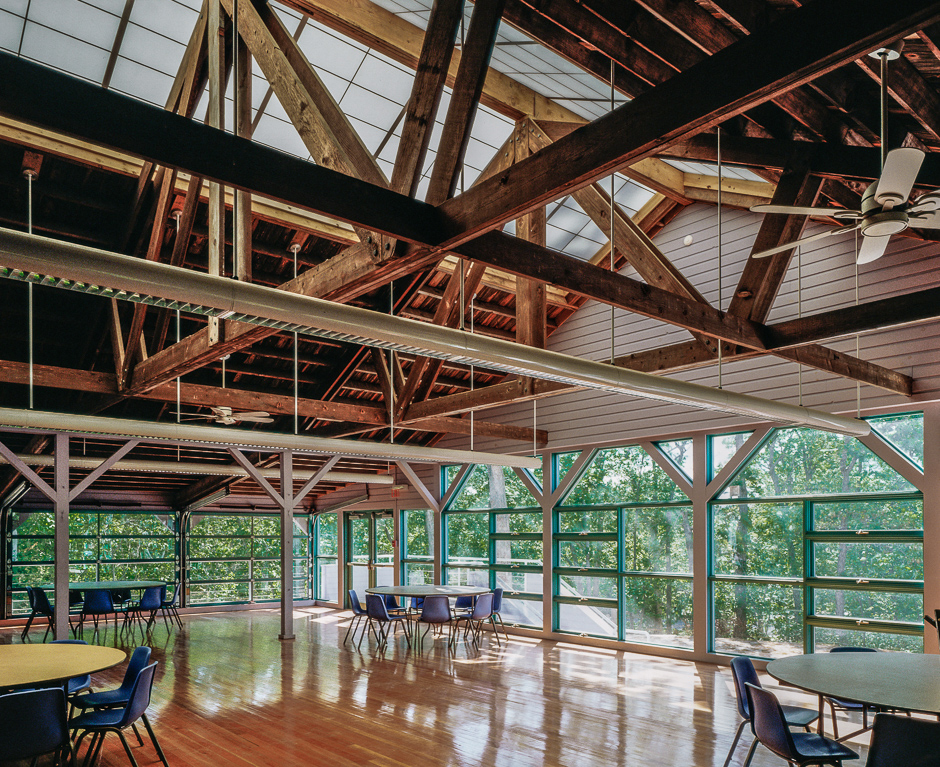
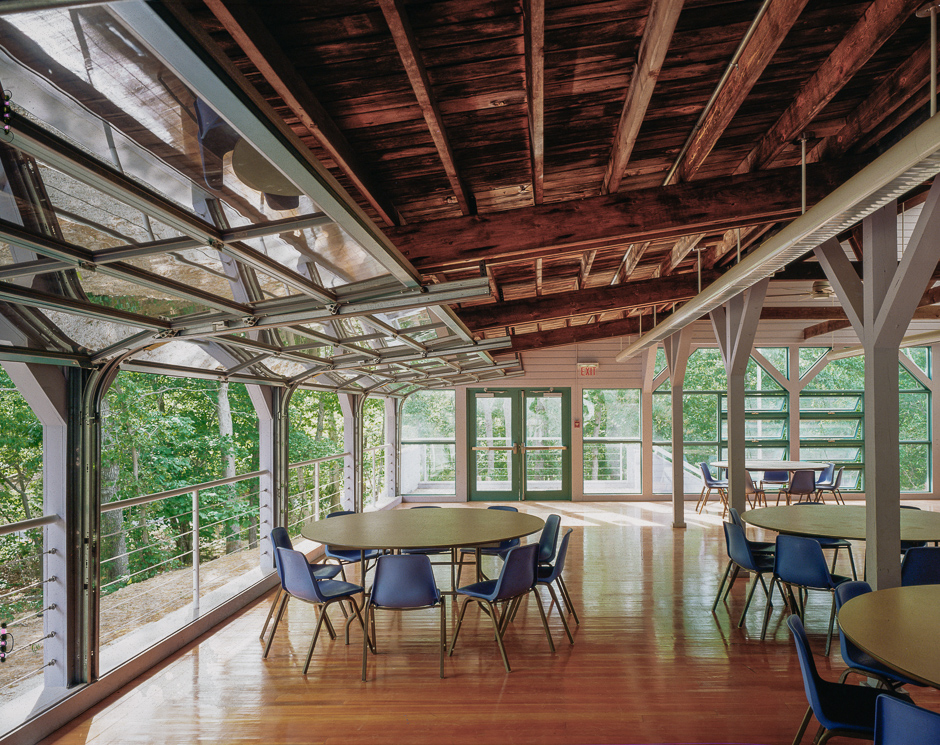
———- Camp Blue Bay ———-
The organization of the Activity Building, Troop Houses and Wash House, and the
reorganization of the Anchorage Dining Hall are intended to give meaning to the functional
and ceremonial roles these facilities play in the Girl Scout programs. Underlying our design
of each structure, in the selection of forms, materials and site relationships for both the new
and renewed buildings, is therefore the assumption that to be given this meaning each
structure should have a distinctive diagram and concept, yet all should share in themes
fundamental to the Camp.
But beyond the encampment theme, and the themes of tent and hearth, of color and
material, that thread through our project, the site concept is most fundamental. Governing
all decisions about the structures, the site concept permits two centers or Camp cores to be’
clearly identified while over the years a transition occurs from one to the other and a new
entry becomes recognized as the main approach to the Camp.
———- Ring Road ———-
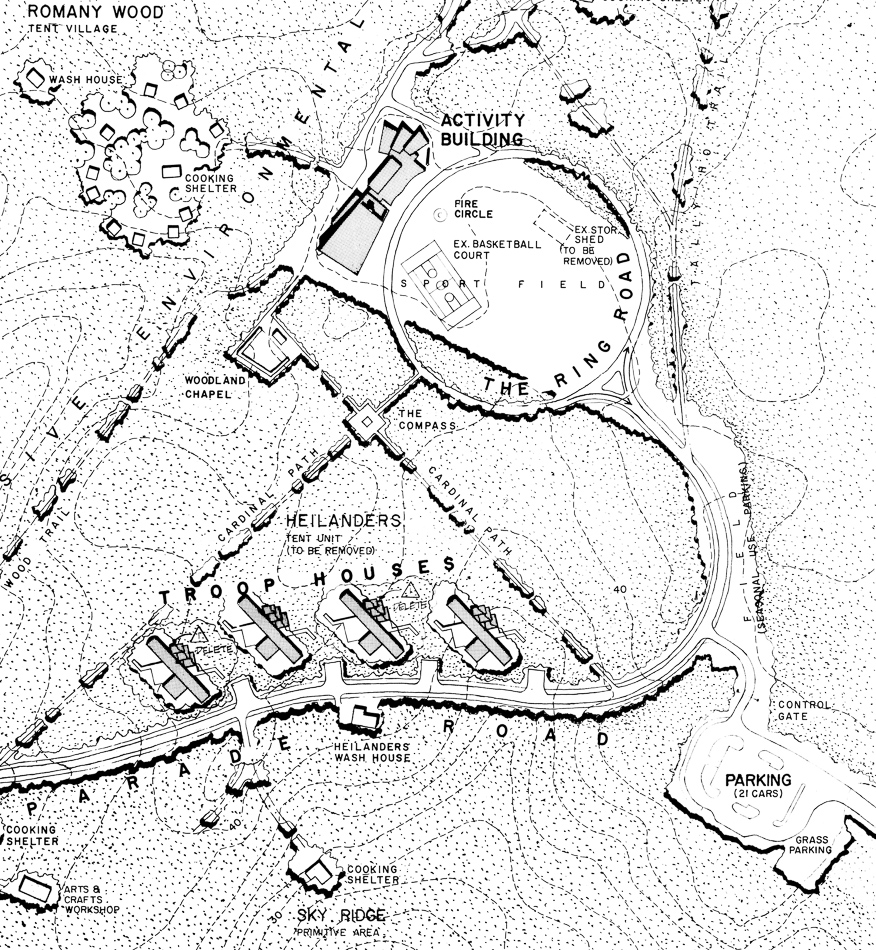
The Ring Road at the Activity Building core area is intended to be an armature for future growth,
while the new Visitor’s Entry to shift the existing entry gradually to a staff and service role.
Placed in a complementary manner at each end of the main Camp path we call the Parade
Road, the Activity Building and the Anchorage are reinforced as the dual ceremonial
centers for all Camp activities. Along this main route, the Troop Houses are a new
transitional encampment, half in the linear clearing for the road and half in the woods. Thus
the combined role of the Troop Houses as sheltered campsites for seasoned Troops in the
winter, as well as for intermediate camping facilities for the younger children first learning
Girl Scouting in the outdoors, and as the initial residential buildings halfway between the old
and new Camp cores and providing a new much-wanted change in the possibilities offered
by this Camp, is made evident.
And the existing Anchorage Building core, with the road now swung wide around it, is meant
now to be more suited to its transitional role as both Dining Hall and inclement weather
shelter for weekend campers. In the end, it will anchor the way to the beach swimming
area, while for now it will retain its familiar role as a gateway to a much-loved Camp, while
the new buildings, necessarily less familiar, with time will take on their own place in the
ceremony and tradition of the place.
————
Text courtesy of Bruce Nagel
Bruce Nagel + Partners | Architects
————————–
Portfolio sponsored by Bruce Nagel + Partners | Architects
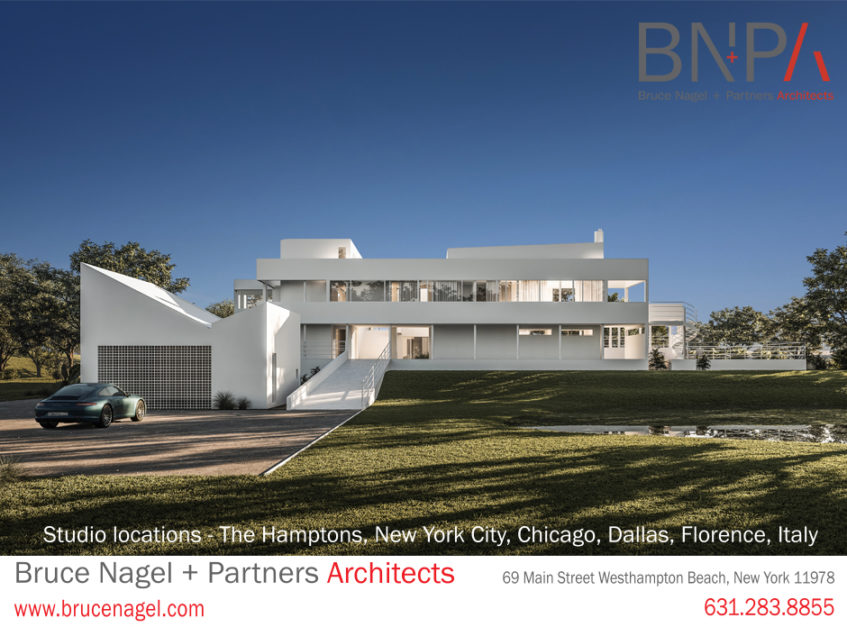
————————–
~~~~~~~~~~~~~~~~~~ CREDITS ~~~~~~~~~~~~~~~~~~
Bruce Nagel, Project Architect
Severud Associates, Structural Engineers
Baldwin & Cornelius, Mechanical Engineers
Office of P. DeBellis, Landscape Architect
Long Island Building Systems, Inc., General Contractor
ERCO Corp., Windows
The Raynor Group, Surveyor & Site Engineer
—————–
Photographed for Nagel & Lesser, 1993, © Jeff Heatley.
____________________________________________________________________

